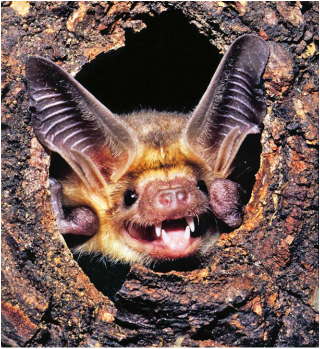Creating Bat-Friendly Habitats
In the realm of natural pest control, bats are often hailed as heroes. These nocturnal creatures feed on insects, consuming thousands of mosquitoes and agricultural pests every night. Yet, bat populations have been declining in recent years due to habitat loss, climate change, and the spread of diseases like white-nose syndrome. To help conserve these valuable mammals and promote a healthy ecosystem, creating bat-friendly habitats is crucial.
1. Understanding Bats’ Needs
Before diving into creating a bat-friendly habitat, it’s essential to understand what attracts bats and meets their needs.
Shelter: Bats require safe roosting places during daylight hours where they can rest undisturbed. They seek out various roosting sites such as caves, tree cavities, rock crevices, abandoned buildings, or even man-made structures like bat houses.
Food Sources: Bats primarily feed on flying insects like mosquitoes, moths, beetles, and flies. Areas with abundant insect populations are highly attractive to bats.
Water Supply: Accessible water sources near their roosts for drinking and feeding are vital for bats’ survival.
2. Landscaping Techniques to Attract Bats
To create an inviting environment for bats near your home or property:
Plant Native Vegetation: Native plants provide food sources for insects that attract bats while preserving the local ecosystem’s biodiversity.
Install a Water Feature: Consider adding a small pond or birdbath in your garden to provide a water source for both insects and bats alike.
Reduce Outdoor Lighting: Bright lights disrupt the natural behavior of nocturnal animals like bats. Minimize outdoor lighting or opt for motion-activated fixtures instead.
3. Building Bat Houses
Bat houses serve as alternative roosting sites when natural ones become scarce due to urbanization or other factors. Constructing proper bat houses can significantly contribute to supporting local bat populations:
Location Matters: Place bat houses in areas with high insect activity, preferably at least 15-20 feet above the ground to deter predators. South-facing locations provide better warmth during cooler months.
Design and Construction: Bat houses should have narrow crevices or chambers that mimic tree cavities. They should be made of untreated wood, ideally roughened or grooved to offer bats a secure grip.
Maintenance: Regularly clean bat houses during winter months when they are not occupied to prevent the spread of diseases. Avoid using pesticides nearby as they can harm the bats’ food sources.
4. Preserving Natural Roosting Sites
Protecting existing roosting sites is just as important as creating new ones:
Retain Old Trees: Mature trees often have natural cavities that serve as ideal bat roosts. If possible, preserve these trees on your property instead of removing them unless there is a safety risk.
Maintain Abandoned Buildings: If you own an older building that provides suitable bat habitat, consider maintaining it rather than demolishing it. Repair any holes or cracks through which bats may enter while ensuring their safe egress.
5. Engaging in Citizen Science Initiatives
Participating in citizen science initiatives related to bat conservation can contribute valuable information for researchers and help monitor local populations:
Bat Surveys: Join local organizations or universities conducting bat surveys in your area. These surveys involve monitoring bat populations through acoustic detectors or visual observations, providing crucial data for research purposes.
Reporting Sightings: Report any unusual sightings or behaviors like dead bats found near wind turbines, signs of white-nose syndrome infection, or mass mortality events to appropriate authorities. This information aids scientists in understanding and addressing emerging threats to bat populations.
6. Educating Others About Bats
Lastly, spreading awareness about the importance of bats and their role in ecosystems is vital for their conservation:
Host Workshops/Webinars: Organize workshops or webinars where experts can educate communities about bats, dispel myths and misconceptions, and provide guidance on creating bat-friendly habitats.
School Programs: Collaborate with local schools to develop educational programs about bats. Engage students in activities like building bat houses or conducting small-scale research projects.
Bat Conservation is a Collective Effort
Creating bat-friendly habitats requires effort from individuals, communities, and governments alike. By implementing these practices, we can help reverse the decline of bat populations while enjoying the benefits they bring to our surroundings. Let us come together to conserve these incredible creatures and promote a healthier coexistence within our ecosystems.


Leave a comment